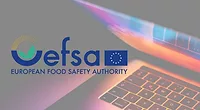EFSA Updating Guidance on Novel Food Applications; Public Consultation Open, Stakeholder Webinar Upcoming

Image credit: Andras Vas via Unsplash
The European Food Safety Authority (EFSA) has launched a public consultation for a draft guidance on the requirements for applications for novel food authorizations in the EU, and will hold a public webinar for stakeholders in March about the draft guidance.
Regulation (EU) 2015/2283, implemented in January 2018, established a centralized procedure for the authorization of novel food applications in the EU. The regulation stipulates that, upon request by the European Commission (EC), EFSA will conduct risk assessments on the safety of novel food applications. In 2016, EFSA developed scientific and technical guidance for the preparation and submission of novel food applications, which is now undergoing its first revision of its scientific content, in response to a mandate from the EC.
Updates to the guidance are intended to reflect recent EU regulatory changes regarding novel foods, consider advances in food research and innovation, and capitalize on EFSA's advancements in assessing novel food applications since the centralization of the process in January 2018. The update touches upon various scientific areas pertinent to the risk assessment of novel foods, including compositional data, identity, production process, toxicological information, exposure, and allergenicity. The goal is that the guidance remains a practical and updated tool for applicants and a reference document for risk assessors.
A preliminary draft version of the revised guidance document has been finalized and made available for public consultation, which is open until March 14, 2024. Alongside the public consultation, EFSA is organizing a webinar for stakeholders to discuss the draft guidance. The meeting will be held online in English on March 21, 2024 from 3:00–6:00 P.M. CET. The deadline for registration is March 19 at 12:00 P.M., and questions can be submitted via the registration form up until March 10. Registration may close before the deadline if the maximum number of participants is reached.
The objectives of the webinar are to explain the main elements of novelty in the updated guidance document, illustrate the ongoing public consultation and provide guidance on how stakeholders can contribute input, and address questions and requests for clarification received from stakeholders regarding the draft guidance document.
Looking for quick answers on food safety topics?
Try Ask FSM, our new smart AI search tool.
Ask FSM →









